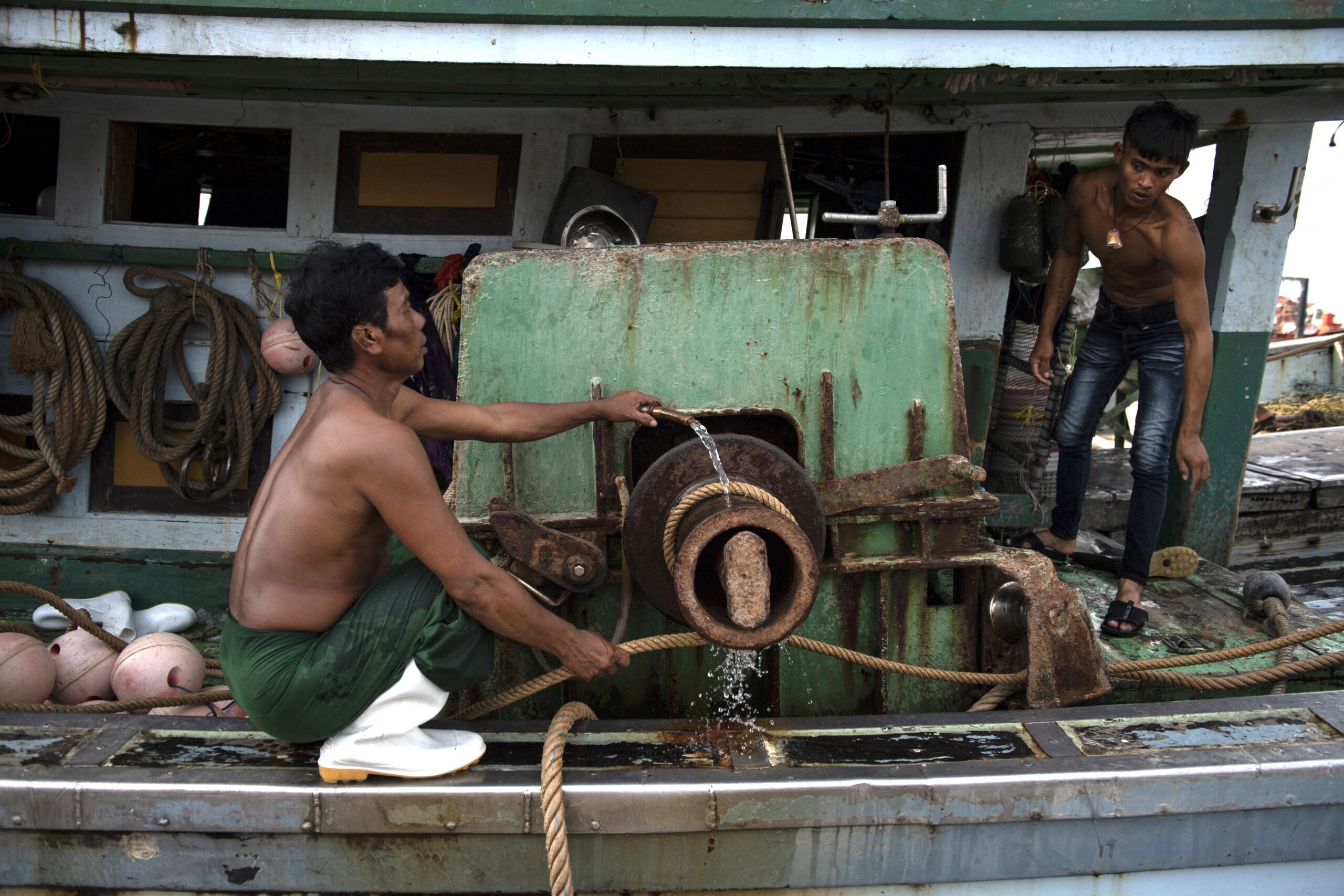When it was released in mid-September, the South Korean survival drama Squid Game captivated the world’s attention. Within four weeks, more than 140 million Netflix subscribers binge-watched the television programme, making it the streaming giant’s most-watched series ever.
Central to the drama is the competition between 456 players, each facing lives of deep desperation, drowning in debt. The grand prize after a series of children’s games, where a loss means immediate death, is 45.6 billion Korean won ($38.5 million).
The series takes its inspiration from creator Hwang Dong-hyuk’s early financial struggles, but also highlights South Korea’s stratospheric household debt, which is now equivalent to more than 100% of gross domestic product. The accumulation of debt coincides with growing income inequality, rising youth unemployment and a middle class unable to keep up with rising property prices in urban areas.
Thailand parallels South Korean household debt, with levels in the Kingdom at 89.3% as recently as September, just off its high of more than 90%. Thais face a number of socio-economic conditions pushing countless residents into acts of very real desperation. The Covid-19 pandemic has exacerbated many of these conditions, with many choosing to end their own lives.
In this, Thailand stands apart from other Southeast Asian countries, as one Thai person attempts to take their own life every ten minutes. The World Health Organization estimates there are 14.4 suicides per 100,000 people in Thailand, compared to just 5.3 in Cambodia or 3.2 in the Philippines.
Debt is often a factor. In Nakhom Phanom, a man and his 7-year-old daughter drowned after jumping into the Mekong River, which was categorised as a murder-suicide. Prior to his August death, his wife left him with sole custody of two daughters and he expressed anxiety over mounting debt. In May, a taxi driver who also was spurred by economic woes leapt off the Rama 7 bridge, leaving behind a message of despair.
In Hat Yai, nine tour guides have committed suicide because of virus-related border closures. The remaining 600 guides have been without income for more than 18 months as they await an influx of foreign tourists, surviving mainly on handouts.
When suicide isn’t a consideration, other acts of desperation are employed. In Ubon Ratchathani, a local government employee offered to sell his family’s eyes and kidneys after the seizure of his house and land. He was a guarantor on a 860,000 baht ($26,267) tractor purchase by a policeman’s wife, who defaulted on the payments.
Solutions to Thailand’s household debt problem aren’t easy or simple. Thailand’s central bank noted in December 2020 that the burden is largely the result of credit card and personal loans. Typically there are three main policy options to reduce household debt: consumer debt restructuring, debt forgiveness or instituting new loan limitations. Thailand began a path to debt restructuring in March 2020, but the pandemic blunted the attempt, causing severe livelihood losses and pushing more Thais into debt.
A local government employee offered to sell his family’s eyes and kidneys after the seizure of his house and land
The dangers of high debt to GDP present additional risks to Thailand’s financial stability and ultimately curb consumer spending. Thailand’s economy isn’t the same as South Korea’s, so solutions should only borrow from relevant best practices. For example, Thailand could mimic a South Korean programme to increase credit supply to low-income people who are vulnerable during weak economic conditions. Legitimate credit might prevent Thais from taking drastic measures such as turning to black market lending.
A replica of South Korea’s National Happiness Fund is also a possibility, as both the private sector and state-run financial institutions pool funds to help write off debt to the most vulnerable applicants. Most importantly, an environment must exist in which lenders avoid making excessive loans relative to the borrower’s repayment ability, while borrowers receive greater education about the financial repercussions of cheap consumer credit.

The lone foreigner in the South Korean drama is Abdul Ali, a Pakistani migrant worker who resorts to playing the game when he is unable to provide for his young family after being denied wages by his boss. Migrant workers in South Korea, particularly farm labourers, face harsh conditions.
Reuters reported in December that 522 Thai migrant workers had died there since 2015, some of unknown causes, others from health issues, accidents or suicide. The problem can be linked to a faulty employment system and increased demand for foreign workers in a rapidly aging society.
In Thailand, migrant workers face similar or worse conditions. The Mekong Migration Network found nine out of every ten agricultural sector migrants worked under difficult conditions for more than eight hours daily and received well below the minimum wage. While many migrated to Thailand to send money to their families throughout Southeast Asia, the objective is difficult under present conditions.
Prior to Covid-19, Thailand’s migrant workers numbered more than 3 million and contributed to as much as 6.6% of GDP, but public attitudes toward them have been decidedly negative. The International Labour Organisation recently noted 53% of Thais surveyed said the country does not require low-skilled migrants and 40% believe migrant workers are a drain on the economy. Scapegoated by Thai politicians like public health minister Anutin Charnvirakul, migrants are easy targets of public ire.
In the Thai economy’s deplorable fishing sector, migrants from Cambodia and Myanmar are often forced into employment contracts they do not understand. Thailand’s reputation in the fishing industry is decidedly negative, with past failures in human trafficking and brutal assaults on fishing boats. Migrant abuse in the canned fruit industry was well documented by British activist Andy Hall, who faced legal action for his research on behalf of a Finnish NGO, which outlined cases of child labour, forced overtime and human trafficking.
The end of desperation for migrant workers seems less promising than for Thais with high household debt. While the pandemic prompted many migrants to head home, their return to Thailand’s subpar conditions is all but certain, even after economic activity returns to normal.
The end of desperation for migrant workers seems less promising than for Thais with high household debt
Regardless of economic conditions, Thailand remains just one of Southeast Asia’s destinations for low-skilled labor. Migrants from Cambodia also face problems of indebtedness, including many who worry their homes will be taken if they default. For many Southeast Asian migrants, indebtedness is often a motivator in their migration, both in the financing of their migration as well as in the repayment of household debt.
The International Organisation for Migration (IOM) recently showed increased concern over migrant indebtedness, particularly in relation to financial services. Microfinance institutions have aggressively offered migrant populations financial products like money transfers, savings accounts and loans packaged as microcredit. The significance of debt to migration is on display in a 2016 IOM survey showing 41% of Cambodian migrants left their country primarily because of financial debt.
As domestic Thai workers and migrant workers move in and out of the country, debt is the main driver of desperation. In the short term, Thailand’s poor economic conditions are likely to worsen indebtedness for migrants as demand for low-skilled labour is tempered while the country recovers from pandemic-related economic shock. Solutions for highly indebted Thais also remain limited for the foreseeable future.
The pandemic may have worsened indebtedness for Thais and migrant workers, but recovery won’t end their desperation anytime soon. Thailand’s Squid Game seems never ending.
Mark S. Cogan is an Associate Professor of Peace and Conflict Studies at Kansai Gaidai University in Osaka, Japan. He is a former communications specialist with the United Nations in Southeast Asia, Sub-Saharan Africa, and the Middle East.


